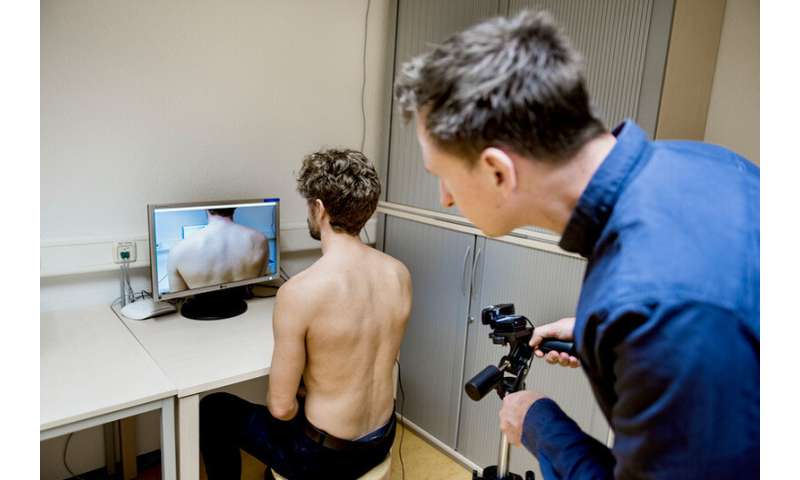
Chronic back pain is reduced when people watch a real-time video of their back for a short time. Watching it also increases the effectiveness of therapies such as massage. This has been shown by studies conducted by the team of Professor Martin Diers from the Department of Psychosomatic Medicine and Psychotherapy at the LWL University Hospital of the Ruhr-Universität Bochum (RUB). The specialists therefore recommend the so-called multisensory integration in the treatment of pain.
People who suffer from back pain often feel significantly impaired. If the pain is chronic, it puts a strain on the whole life, affects everyday life, and prevents patients from working or participating in social activities. “Patients are very familiar with their pain,” says Martin Diers. “For example, they can say at which time exactly during the day the pain occurred or how it feels like. But for them it is difficult to describe the exact location of the pain.”
Watching a video for one minute
Diers and his colleagues wanted to know if the chronic pain intensity could be modulated by looking at the painful site. He dedicated several studies to this problem, both with pain patients and with control subjects without back pain. In either case a video camera was used, which was placed behind the participants and transmitted the image of their backs in real time to a monitor in front of the person. The participants rated the intensity of their pain on a scale from zero to ten.
“We demonstrated that merely watching the real-time video of their own back reduces the chronic back pain intensity after one minute,” concludes Martin Diers. If the patients saw another patient’s video instead of their own, or a photo of their back or a book, no changes in pain intensity were reported.
The resolution of visual information is higher
“Pain stimuli activate certain nerve cells in the skin, which transmit a signal to the brain and are processed there,” says the psychologist. “The resolution of this system could be increased in conjunction with the visual information. This helps to determine the location of the painful stimulus more exactly.
Consequently, pain specialists take advantage of the combination of several senses. This is called multisensory integration. For the application of this approach in treatments, they analysed the effect of watching the treated area of the body in different therapies for chronic back pain patients. During a massage of the painful area of the body, for example, they showed patients either the real-time video of the treatment or a recording of a massage of another person, a photo of their own back or a book, or they asked them to keep their eyes closed.
Source: Read Full Article
